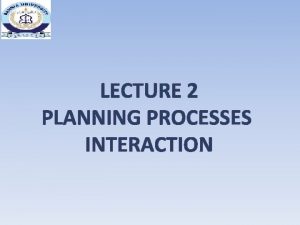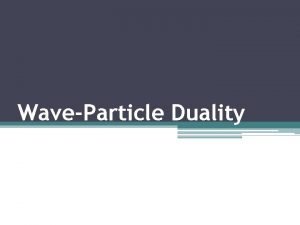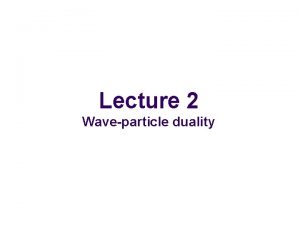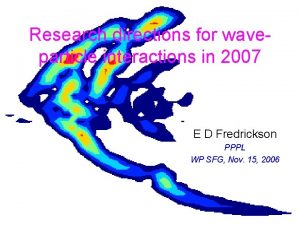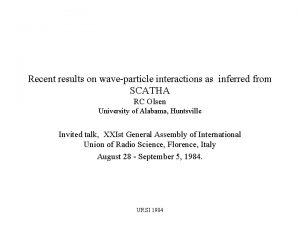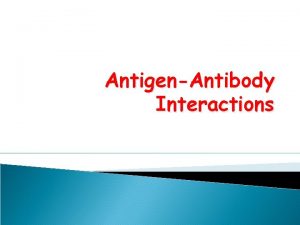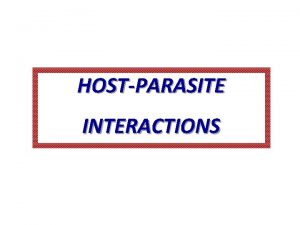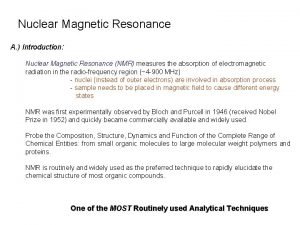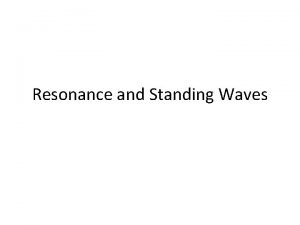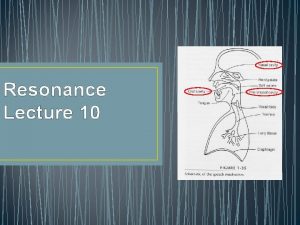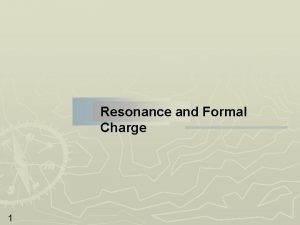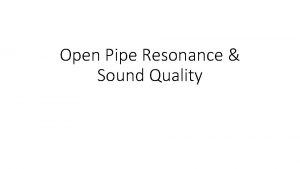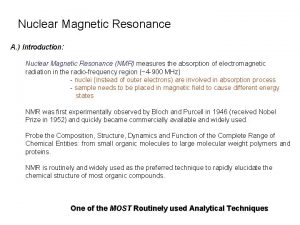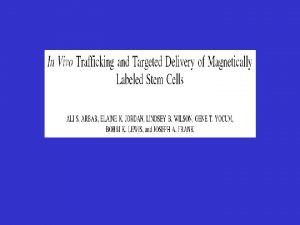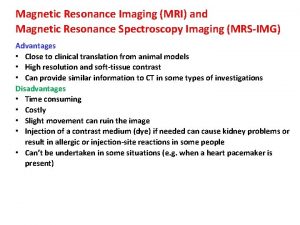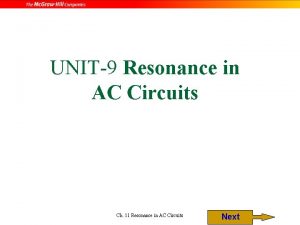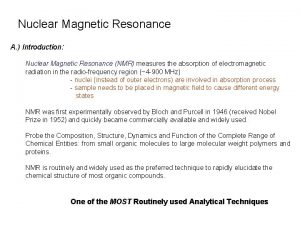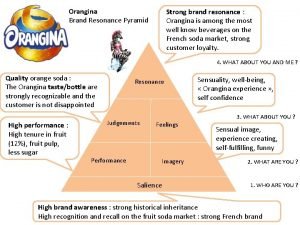RESONANCE Project for Studies of WaveParticle Interactions in




















- Slides: 20

RESONANCE Project for Studies of Wave-Particle Interactions in the Inner Magnetosphere Anatoly Petrukovich and Resonance team R РЕЗОНАНС RESONANCE

Space Research Institute Resonance Inner magnetospheric mission Ø Space weather Ring current, outer radiation belt, plasmasphere Ø Resonant wave-particle interactions Magnetospheric cyclotron maser Ø Auroral region acceleration Small-scale active zones, precipitation Ø Two pairs of spacecraft To be launched in 2014 2011: Engineering models delivery Ø Magneto-synchronous orbit

Space Research Institute Resonance team • • • Russia – Space Research Institute, Project Leader NPO S. A. Lavochkin, Prof. L. M. Zelenyi Institute of Applied Physics, Project Scientist IZMIRAN, PGI, NIRFI, … Dr. M. M. Mogilevsky Austria – Space Research Institute Bulgaria – Space Research Institute Czech Republic – Institute of Atmospheric Physics Finland – Oulu University France – LPC 2 E/CNRS, CESR/CNRS Germany – MPI Lindau Greece – Thrace University Poland – Center for Space Research Slovakia – Institute of Experimental Physics Ukraine – Lviv center, Space Research Inst. , Inst. of Astronomy USA – Maryland University

Space Research Institute Orbit design Goal: corotation with a flux tube Magnetosynhronous orbits Apogee: ~28 000 km, Perigee: ~ 500 km, Period: ~ 8 hours Inclination: +63. 4 o and -63. 4 o

Space Research Institute Magnetosyncronous orbit Resonance 1 А и 1 В Resonance 2 А и 2 В

Space Research Institute Three sample orbits: corotation up to 3 hours SC 2 SC 1

Space Research Institute Zones along orbit auroral zone RESONANCE 1 orbit inner radiation belt RESONANCE 2 orbit outer radiation belt, corotation

Space Research Institute Separation strategy with four spacecraft Resonance 1 А и 1 В ~ 1 -100 km ~ 5 -15 000 km ~1 - 5 000 km Resonance 2 А и 2 В

Space Research Institute Preliminary strategy of satellite separation First pair (1 A/1 B) Second pair (2 A/2 B) 1 st phase (1 -9 months) 1 -10 km 2 nd phase (9 -18 months) 1 -10 km 10 -100 km 3 rd phase (18 -27 months) 10 -100 km 100 -1000 km 4 th phase (27 -36 months) 100 -1000 km 1000 -9600 km

Space Research Institute RESONANCE instruments Electric and magnetic sensors Wave analyzer and interferometer DC – 10 MHz Plasma sensors Cold plasma Suprathermal plasma Energetic particles Relativistic electrons

Space Research Institute Scientific instrumentation EM field and wave measurements Flux-gate magnetometer 3 components of B field, DC – 10 Hz ~ 2. 1 kb/s ULF electric field receiver 3 components of E field, DC – 10 Hz ~ 1. 4 kb/s VLF receiver 3 electric and 3 magnetic components of EM field, 10 Hz – 20 k. Hz ~ 5. 76 Mb/s HF receiver 3 electric and 3 magnetic components of EM field, 5 k. Hz – 1 MHz, 5 MHz, 15 MHz ~ 2. 16 Gb/s Space radio interferometer 5 -15 MHz

Space Research Institute Scientific instrumentation Plasma and particle measurements Cold plasma analyzer 0 – 20 e. V Suprathermal electron spectrometer 10 e. V – 15 ke. V Suprathermal ion spectrometer with composition 10 e. V – 30 ke. V Fast electron analyzer (10 ms) 5 ke. V – 50 ke. V Ring current ions and energetic electrons spectrometer 20 ke. V – 0. 4 Me. V Relativistic electrons 300 ke. V – 5 Me. V

Space Research Institute Some issues to be resolved Verification of chorus generation theory Existing theories of chorus generation connect characteristics of chorus (frequency sweep-rate, time interval between chorus elements) with chorus amplitude which, in turn, depends on cold plasma density, plasma inhomogeneity, and resonant electron distribution function. Electron pitch-angle diffusion and precipitation Various wave-modes (whistlers, whistler-mode chorus, electromagnetic and electrostatic ion cyclotron waves, upper hybrid waves) have been suggested. Proton precipitation with the operation of ground-based VLF transmitters Nature of particle energization (acceleration) via wave-particle interactions RESONANCE mission measures all necessary quantities simultaneously in the magnetic flux tube of effect

Space Research Institute Magnetospheric maser Loss cone Wave packet Ionosphere Active substance: Energetic electrons > 5 ke. V Electrodynamical system: magnetic tube with cold plasma, ionosphere as mirrors Operating modes: whistler and ion cyclotron waves Important for acceleration of Me. V electrons

Space Research Institute History Discovery of radiation belts Sputnik 3, Explorer 1 (1958) First observations of ELF/VLF el. -m. waves Alcock, Martin (1956) Duncan, Ellis (1959) CM in the Earth magnetosphere Brice (1964); Dungey (1963); Trakhtengerts (1963); Andronov and Trakhtengerts (1964); Kennel and Petchek (1966) Electronics Gaponov-Grekhov (1959) Andronov, Zheleznyakov, and Petelin (1964) Plasma Physics Zheleznyakov (1960) Sagdeev and Shafranov (1960) Vedenov, Velikhov, and Sagdeev (1961)

Space Research Institute Particles and fields Frequency, k. Hz ELF/VLF chorus energetic electrons 2 latitude=30 o F Energy , ke. V 0 time, s Waveform capability for E and B up to 10 -40 k. Hz c t i P le g n -a h 5 Electron distribution in ke. V range ~10 ms sampling, d. E/E ~ 1% Theory by V. Trakhtengerz & A. Demekhov

Space Research Institute Ring current, radiation belt, plasmasphere Ø Injection development Ø Me. V electron dynamics Ø Ring current formation Ø Wave-particle interaction Ø Plasmasphere refilling and loss

Space Research Institute Auroral acceleration region FAST electric fields and electrons 1 ms AKR onboard INTERBALL-2

Space Research Institute International inner magnetospheric constellation 2012 -2015 RESONANCE altitude 27000 km inclination 63 deg ERG 4 -5 Re near-equatorial RBSP 30000 km near-equatorial + geostationary satellites, MMS, THEMIS, KUAFU-auroral Ø Collaborative science topics in which synergy is possible ? Ø Orbital conjunctions ?

Space Research Institute Resonance - HAARP Ø Artificial electromagnetic waves Ø Modification of precipitation particles Ø Modification of the reflection coefficient from the ionosphere
 Project management process interactions
Project management process interactions Paradigm shift from women studies to gender studies
Paradigm shift from women studies to gender studies Kontinuitetshantering
Kontinuitetshantering Typiska drag för en novell
Typiska drag för en novell Tack för att ni lyssnade bild
Tack för att ni lyssnade bild Ekologiskt fotavtryck
Ekologiskt fotavtryck Varför kallas perioden 1918-1939 för mellankrigstiden
Varför kallas perioden 1918-1939 för mellankrigstiden En lathund för arbete med kontinuitetshantering
En lathund för arbete med kontinuitetshantering Personalliggare bygg undantag
Personalliggare bygg undantag Vilotidsbok
Vilotidsbok Anatomi organ reproduksi
Anatomi organ reproduksi Förklara densitet för barn
Förklara densitet för barn Datorkunskap för nybörjare
Datorkunskap för nybörjare Stig kerman
Stig kerman Mall debattartikel
Mall debattartikel Delegerande ledarskap
Delegerande ledarskap Nyckelkompetenser för livslångt lärande
Nyckelkompetenser för livslångt lärande Påbyggnader för flakfordon
Påbyggnader för flakfordon Vätsketryck formel
Vätsketryck formel Svenskt ramverk för digital samverkan
Svenskt ramverk för digital samverkan Jag har nigit för nymånens skära text
Jag har nigit för nymånens skära text
